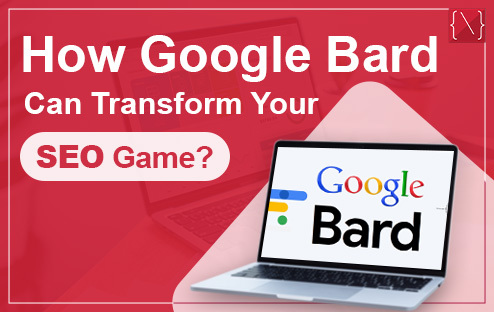
The world of SEO is constantly evolving, and with the introduction of Google Bard, a new wave of possibilities is emerging. This innovative AI tool, built on Google’s LaMDA language model, promises to be a game-changer for businesses looking to optimize their online presence and climb the search engine rankings. But how exactly can Bard transform your SEO strategy? Let’s explore some the exciting ways this AI assistant can empower your content creation, website optimization, and overall SEO approach.
- Semantic Understanding: Traditional SEO strategies often revolved around keyword optimization, with a focus on stuffing content with targeted keywords. However, Google Bard emphasizes semantic understanding, meaning it can discern the underlying meaning of words and phrases within the context of a sentence or paragraph. This allows for more natural and engaging content creation, rather than forced keyword insertion.
- Intent-Based Search Results: With Google Bard, search results are not just based on exact keyword matches but also on the intent behind the search query. By analyzing the context of the query, including the user’s search history, location, and other relevant factors, Google Bard delivers more personalized and relevant search results. As a result, businesses can tailor their SEO strategies to better align with user intent, leading to higher conversion rates and improved user satisfaction.
- Natural Language Queries: The rise of voice search and conversational interfaces has transformed the way people interact with search engines. Google Bard is adept at understanding natural language queries, including long-tail keywords and conversational phrases. This means that businesses can optimize their content for a wider range of search queries, capturing more organic traffic and catering to the growing number of voice search users.
- Content Quality and Relevance: In the era of Google Bard, quality reigns supreme. Search engines prioritize content that is not only relevant to the user’s query but also authoritative, comprehensive, and well-written. By focusing on creating high-quality content that provides value to your target audience, you can improve your chances of ranking highly in search results and establishing your brand as a trusted source of information.
- User Experience Optimization: Beyond content relevance, Google Bard also takes into account factors related to user experience, such as page load speed, mobile-friendliness, and overall website usability. By optimizing your website for these factors, you can enhance the user experience and increase the likelihood of retaining visitors and encouraging repeat visits.
- Structured Data and Schema Markup: Leveraging structured data and schema markup can provide search engines with additional context about your content, helping them understand its relevance and significance. Google Bard is adept at interpreting structured data, allowing businesses to enhance their search listings with rich snippets, knowledge graphs, and other interactive elements that can attract more clicks and improve visibility in search results.
- Adaptability and Evolution: As with any technology driven by machine learning, Google Bard is constantly evolving and improving over time. This means that SEO strategies must also adapt and evolve to keep pace with the latest developments. By staying informed about updates and best practices related to Google Bard, businesses can maintain their competitive edge and continue to reap the benefits of effective SEO.
In conclusion, Google Bard has the potential to transform the way businesses approach SEO. By using its AI capabilities, businesses can enhance their content creation process, improve keyword research, optimize meta tags and descriptions, enhance user experience, and stay up to date with algorithm updates. Embracing this revolutionary tool can give businesses a competitive advantage in the ever-evolving world of SEO, leading to improved rankings, increased organic traffic, and ultimately, better business outcomes.
ALSO READ: How Are The Keywords Determined For SEO Needs?

SEO or search engine optimization is a critical part of digital marketing. The process of optimizing your website to rank higher on search engine result pages (SERPs) is what SEO is all about. One of the most important aspects of SEO is determining the right keywords for your website.
Keywords are the words or phrases that people use to search for a particular service or product on search engines. Keywords play an essential role in SEO because they help search engines to understand the context and theme of your website. Using the right keywords can help improve your website’s visibility, drive traffic, and ultimately increase conversions.
So, how are the keywords determined for SEO needs? Here are some of the ways you can determine the right keywords for your website:
- Relevance: The chosen keywords must be highly relevant to your business, website content, and target audience. Targeting irrelevant keywords might attract traffic, but it won’t convert if it doesn’t match your offerings.
- Search Volume: This refers to the average number of times a particular keyword is searched for in a given period. Ideally, you want keywords with a decent search volume to attract a sizable audience. However, it’s not always about chasing the highest numbers.
- Competition: Some high-volume keywords might be extremely competitive, making it difficult for new websites to rank well. Consider the level of competition you’re facing when choosing keywords.
- Search Intent: Understanding the searcher’s intent behind a keyword is crucial. Are they looking for information, trying to compare products, or ready to make a purchase? Optimizing your content for the searcher’s intent will improve its effectiveness.
The Steps to Successful Keyword Research
Now that we understand the importance of choosing the right keywords, let’s explore the steps involved in conducting successful keyword research:
- Brainstorming Relevant Topics: Start by brainstorming a list of topics highly relevant to your niche and target audience. Think about the products or services you offer, the problems you solve, and the information your ideal customer might be searching for.
- Keyword Exploration Tools: Utilize keyword research tools like Google Keyword Planner, SEMrush, or Ahrefs to discover related keywords and search phrases. These tools provide valuable data on search volume, competition level, and even suggest long-tail keywords (more specific keyword phrases).
- Analyzing Search Results (SERPs): Take some time to analyze the top-ranking pages for your target keywords. This will give you valuable insights into the type of content that is already ranking well. You can then identify opportunities to create even better, more informative, or unique content that stands out from the competition.
- Prioritizing Your Keywords: Once you have a comprehensive list of potential keywords, prioritize them based on the factors mentioned earlier. Consider using a mix of high-volume, medium-volume, and long-tail keywords to create a well-rounded SEO strategy.
Additional SEO Considerations
While keyword research is a fundamental aspect of SEO, it’s not the only factor at play. Here are some additional considerations to keep in mind:
On-Page Optimization: Once you’ve identified your target keywords, integrate them naturally into your website content, page titles, meta descriptions, and header tags.
Content Quality: Creating high-quality, informative, and engaging content that caters to your target audience’s needs is essential. Google prioritizes valuable content that provides a positive user experience.
Backlinks: Earning backlinks (links from other websites to yours) is another crucial SEO factor. Backlinks signal to search engines that your website is trustworthy and relevant.
Conclusion
Effective keyword research is a crucial part of successful SEO strategy. By understanding the factors that influence keyword selection and following the steps outlined above, you can identify the right keywords to target and optimize your website content for better organic search visibility. Remember, SEO is an ongoing process. Regularly revisit your keyword strategy, analyze your website’s performance, and adapt your approach to stay ahead of the curve.
ALSO READ: What is Sitemap & How does It help in SEO?
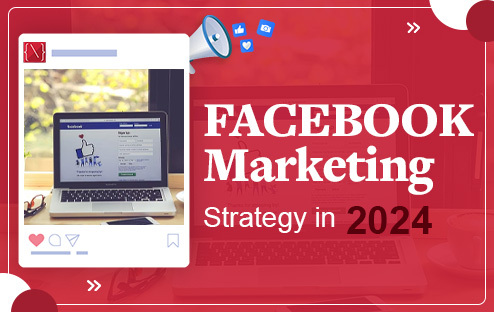
Facebook remains a powerful platform for reaching an engaged audience and driving results for businesses. However, with constant algorithm updates and evolving user behavior, staying ahead of the curve requires a well-defined and adaptable strategy. In 2024, success on Facebook demands a focus on authenticity, community building, and data-driven optimization.
This comprehensive guide will equip you with the knowledge and strategies to implement a thriving Facebook marketing campaign in 2024:
1. Define Your Goals and Target Audience:
- Set SMART goals: Be specific, measurable, achievable, relevant, and time-bound. Do you want to increase brand awareness, drive website traffic, generate leads, or boost sales? Clearly define your objectives to guide your content and targeting strategies.
- Know your audience: Conduct thorough research to understand your ideal customer’s demographics, interests, online behavior, and pain points. This knowledge will inform your content creation, targeting options, and overall communication style.
2. Craft Compelling Content:
- Focus on quality over quantity: Prioritize engaging and informative content that resonates with your audience. Experiment with different formats like images, videos, live streams, stories, and polls to keep your audience interested.
- Embrace authenticity: People connect with genuine brands. Share your brand story, showcase your values, and connect with your audience on a personal level.
- Prioritize visual content: Images and videos grab attention and are more likely to be shared and consumed. Invest in high-quality visuals that complement your messaging.
- Tell stories: Weave narratives into your content to captivate your audience and evoke emotions.
3. Leverage Facebook Groups and Communities:
- Join relevant groups: Engage with existing communities where your target audience gathers. Share valuable insights, participate in discussions, and build relationships with potential customers.
- Create your own group: Foster a dedicated community around your brand. Encourage discussions, offer exclusive content, and provide a platform for customer interaction and feedback.
4. Utilize Paid Advertising (Strategically):
- Boost high-performing organic posts: Amplify your reach and engagement by strategically boosting posts that resonate with your audience.
- Run targeted ad campaigns: Leverage Facebook’s powerful targeting options to reach specific demographics, interests, and behaviors. A/B test different ad formats, copy, and creatives to optimize performance.
- Retarget website visitors: Stay top-of-mind with users who have interacted with your website by showing them relevant ads based on their browsing behavior.
5. Measure and Optimize:
- Track key metrics: Monitor key performance indicators (KPIs) aligned with your goals, such as reach, engagement, website traffic, leads generated, and sales conversions.
- Utilize Facebook Insights: Gain valuable data and insights into your audience demographics, content performance, and ad campaign effectiveness.
- Analyze and adapt: Regularly review your data and make adjustments to your strategy based on what’s working and what’s not. Continuously refine your content, targeting, and ad campaigns for optimal results.
Additional Tips for Facebook Marketing Success in 2024:
- Embrace short-form video content: Capitalize on the popularity of Reels and Stories to capture attention and share engaging snippets.
- Utilize interactive features: Encourage audience participation through polls, quizzes, and Q&A sessions to boost engagement.
- Partner with influencers: Collaborate with relevant influencers in your niche to reach a wider audience and leverage their credibility.
- Prioritize customer service: Respond promptly to comments and messages, address concerns efficiently, and demonstrate a commitment to customer satisfaction.
- Stay informed: Keep up with the latest Facebook algorithm updates, emerging trends, and best practices to adapt your strategy accordingly.
By implementing these strategies and staying adaptable, you can build a thriving Facebook presence in 2024 and achieve your marketing goals. Remember, success on Facebook hinges on creating valuable content, fostering meaningful connections, and making data-driven decisions to continuously optimize your approach.
ALSO READ:- Necessary Points to Remember For Email Marketing – Tips, Tricks & Ideas
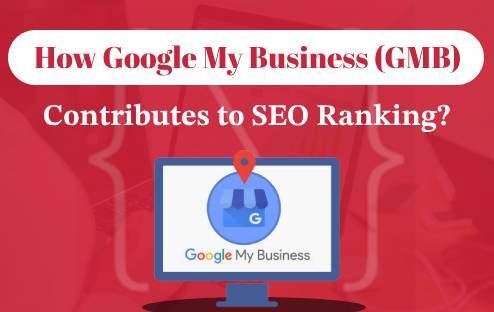
In the age of digital domination, local businesses need to be present where their customers are searching – online. And when it comes to local search, Google My Business (GMB) reigns supreme. Beyond simply creating a virtual presence, GMB offers a powerful tool to boost your SEO ranking and attract more customers through your doors.
But how exactly does GMB contribute to SEO? Let’s jump into the secrets:-
1. Relevance & Visibility
- Local Pack Domination: Claiming and optimizing your GMB profile increases your chances of appearing in the coveted Local Pack, the top three business listings displayed for local searches. This prime real estate drives significant traffic and brand awareness.
- Keyword Optimization: Include relevant keywords in your business description, category selection, and posts to enhance discoverability by potential customers searching for your offerings.
- Complete & Consistent Information: Ensure your NAP (Name, Address, Phone number) is accurate and consistent across all online platforms, including your website and social media. Google favors listings with consistent information, boosting your local relevance.
2. Building Trust & Credibility
- Positive Reviews & Ratings: Encourage customers to leave positive reviews and respond to both positive and negative feedback promptly and professionally. Google considers the quantity and quality of reviews as a ranking factor, showcasing businesses with strong reputations.
- Direct Communication: Interact with your customers through reviews and Q&A sections, demonstrating responsiveness and engagement. This builds trust and strengthens your online presence.
3. Content & Engagement
- Regular Posts: Update your GMB profile with engaging posts, including photos, videos, and events. This keeps your profile fresh, attracts attention, and provides valuable information to potential customers.
- Showcase Products & Services: Highlight your offerings with detailed descriptions, high-quality visuals, and call-to-actions. This entices customers to learn more and potentially transact.
- Local Events & Offers: Promote local events, discounts, and special offers through GMB posts, attracting customers searching for deals in your area.
4. Mobile Magic
- Mobile-Friendly Profile: Ensure your GMB profile is mobile-optimized for seamless user experience on smartphones and tablets, where a significant portion of local searches occur.
- Click-to-Call & Directions: Enable click-to-call functionality and provide clear directions, making it easy for mobile users to contact and visit your business.
5. Beyond Local: GMB’s broader SEO impact
While the primary benefits lie in local search, GMB can also influence your overall SEO ranking. Positive reviews and engagement signals on your GMB profile can potentially improve your website’s ranking in organic search results.
Remember: GMB is a dynamic platform. Regularly update your profile, respond to reviews, and adapt your strategy to stay ahead of the curve. By leveraging these tips and understanding how GMB contributes to SEO, you can unlock the true potential of local search and attract more customers to your business.
Bonus Tip: Integrate your GMB profile with your website and social media for a strong online presence and further SEO benefits.
So, Start optimizing your GMB profile today and watch your local SEO soar!
ALSO READ:- What is Sitemap & How does It help in SEO?
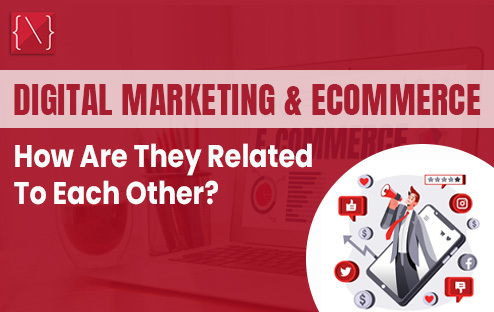
Digital marketing and ecommerce are two buzzwords that have been dominating the business world in recent years. With the rise of technology and internet usage, these two concepts have become crucial for the success of any business, big or small. While some may think that they are separate entities, the truth is that they are deeply interconnected and rely on each other for growth and success.
To understand the relationship between digital marketing and ecommerce, let’s first define both terms. Digital marketing is the use of various digital channels such as social media, search engines, email, and websites to reach and engage with potential customers. On the other hand, ecommerce refers to the buying and selling of goods and services online. It includes everything from online shopping platforms to online banking and other online transactions.
Now, let’s dive deeper into how digital marketing and ecommerce are related to each other.
Increased Reach and Visibility
One of the main goals of digital marketing is to increase a business’s online presence and reach its target audience. With the use of various digital channels, businesses can reach a wider audience than traditional marketing methods. This, in turn, helps to increase brand awareness and visibility. With more people being aware of a brand’s existence, the chances of attracting potential customers and increasing sales also increases.
Ecommerce, on the other hand, provides businesses with a platform to showcase and sell their products or services online. With an ecommerce website, businesses can reach a global audience, expanding their reach and customer base even further. Digital marketing and ecommerce work hand in hand to increase a business’s reach and visibility, making it easier for them to connect with their target audience and potential customers.
Personalization and Targeting
Digital marketing offers businesses the ability to personalize their messages and target specific audiences based on their interests, demographics, and online behavior. This level of personalization helps businesses to create more relevant and tailored marketing campaigns, which, in turn, increases the chances of conversion.
Ecommerce also allows for personalization through features such as product recommendations and personalized offers based on a customer’s purchase history. This enhances the overall shopping experience for customers, making them more likely to return and make repeat purchases. Digital marketing and ecommerce work together to provide a more personalized and targeted approach, making it easier for businesses to attract and retain customers.
Data and Analytics
Digital marketing and ecommerce both rely heavily on data and analytics to measure their success and make informed decisions. With digital marketing, businesses can track and analyze various metrics such as website traffic, social media engagement, email open rates, and more. This data provides valuable insights into customer behavior and preferences, which can be used to optimize marketing strategies and campaigns.
Ecommerce platforms also provide businesses with data on customer behavior, purchase patterns, and more. This data can be used to improve the user experience, optimize product offerings, and make data-driven decisions to increase sales and revenue. The integration of digital marketing and ecommerce allows businesses to gather and analyze data from various sources, providing a more comprehensive understanding of their target audience and market.
Seamless Customer Journey
In today’s digital age, customers expect a seamless shopping experience, whether it’s online or in-store. Digital marketing and ecommerce work hand in hand to provide a smooth customer journey from the initial awareness stage to the final purchase. Digital marketing efforts drive traffic to ecommerce platforms, while ecommerce platforms provide a seamless and convenient buying experience for customers.
Moreover, with the rise of social commerce, where customers can discover and purchase products directly on social media platforms, the line between digital marketing and ecommerce is becoming even more blurred. This integration allows for a more seamless and effortless customer journey, increasing the chances of conversion and customer satisfaction.
In conclusion, digital marketing and ecommerce are two sides of the same coin. They rely on each other to drive business growth and success in today’s digital landscape. As technology continues to evolve, the relationship between these two concepts will only become stronger, making it crucial for businesses to understand and effectively utilize both to stay competitive.
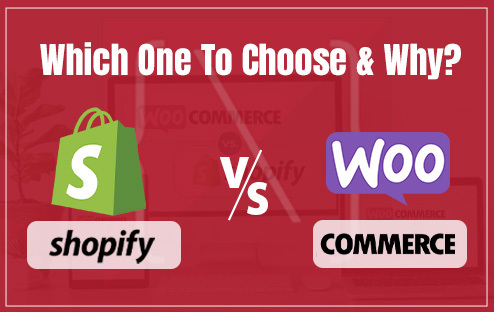
In today’s digital age, having an online presence is crucial for businesses to thrive and reach their target audience. With the rise of e-commerce, more and more businesses are looking to establish an online store to sell their products and services. When it comes to building an e-commerce website, two of the most popular platforms are Shopify and WooCommerce. Both have their own unique features and benefits, but which one is the right choice for your business? In this blog, we will do a thorough comparison of Shopify and WooCommerce and help you make an informed decision on which one to choose.
Shopify is a leading e-commerce platform that allows businesses to easily set up an online store without any technical knowledge or coding skills. It is a fully hosted solution, which means Shopify takes care of all the technical aspects of running an online store, such as hosting, security, and maintenance. With Shopify, you can choose from a variety of stunning templates and customize your website to fit your brand’s aesthetic. It also offers a user-friendly interface and a wide range of features, making it an ideal choice for beginners and small businesses.
On the other hand, WooCommerce is a free, open-source plugin for WordPress, the world’s most popular content management system (CMS). It is a self-hosted solution, which means you will need to purchase a domain, hosting, and SSL certificate to set up your online store. WooCommerce offers a high level of customization and flexibility, making it a preferred choice for businesses with more advanced needs. It also has a large community of developers constantly creating new plugins and extensions to enhance its functionality.
Now let’s dive into the comparison between Shopify and WooCommerce based on some key factors.
1) Ease of Use:
As mentioned earlier, Shopify is a fully hosted solution, which means you don’t need any technical knowledge to set up your online store. It has a user-friendly interface and offers a drag-and-drop builder to customize your website. On the other hand, WooCommerce requires some technical knowledge to set up and customize your website. However, with the help of WordPress tutorials and a little bit of effort, you can easily get the hang of it.
2) Cost:
Shopify offers a variety of pricing plans, starting from $29 per month for its basic plan. It also charges transaction fees for each sale made through your online store. On the other hand, WooCommerce is a free plugin, but you will need to purchase a domain, hosting, and SSL certificate. However, you have complete control over your costs with WooCommerce, and there are no transaction fees.
3) Customization:
Shopify offers a wide range of templates and themes to choose from, but customization options are limited. You can only make changes to the design elements provided by Shopify. On the other hand, WooCommerce offers endless customization options as it is built on WordPress, which is known for its flexibility and customization capabilities.
4) Payment and Shipping Options:
Both Shopify and WooCommerce offer a variety of payment and shipping options. However, Shopify has its own payment gateway, Shopify Payments, which charges lower transaction fees compared to third-party gateways. WooCommerce, on the other hand, offers integration with various payment gateways, giving you more flexibility in choosing the one that works best for your business.
5) Support:
Shopify offers 24/7 customer support through phone, email, and live chat. It also has a dedicated help center with tutorials and guides to help you with any issues. WooCommerce, being an open-source platform, offers community support through forums and documentation. However, you can also purchase premium support from third-party vendors if needed.
In conclusion, both Shopify and WooCommerce have their own strengths and weaknesses. If you’re a beginner or a small business looking for a hassle-free, all-in-one solution, Shopify may be the right choice for you. On the other hand, if you have some technical knowledge and want full control over your website’s customization, WooCommerce may be a better fit. Ultimately, the decision depends on your specific business needs and budget.
If you’re still unsure about which platform to choose, you can always seek the help of an expert. Cleonix Technologies, the best ecommerce website development company in Kolkata, offers expert guidance and services to help businesses build a successful online store on either Shopify or WooCommerce. With our team of experienced developers and designers, we ensure that your e-commerce website is user-friendly, visually appealing, and optimized for conversions. Contact us today to take your e-commerce business to the next level.
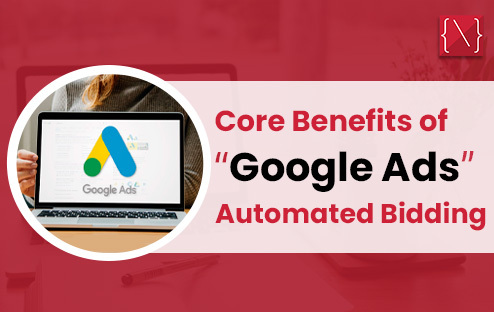
In today’s digital age, advertising is a crucial element of any business’s marketing strategy. With the rise of online platforms and e-commerce, companies are constantly looking for ways to reach their target audience and drive conversions. One effective tool that has gained immense popularity in recent years is Google Ads, formerly known as Google AdWords. With its wide reach and targeting capabilities, Google Ads has become the go-to platform for businesses to advertise their products or services.
However, managing Google Ads campaigns can be a time-consuming and complex process. This is where automated bidding comes into play. With the advancement of technology, Google has introduced automated bidding options to help businesses streamline their advertising efforts. In this blog, we will dive into the core benefits of Google Ads automated bidding and how it can help businesses achieve their advertising goals.
1. Saves Time and Effort
One of the main benefits of using automated bidding on Google Ads is the time and effort it saves. Manually managing bids for each keyword can be a tedious and time-consuming task. With automated bidding, businesses can set their desired bid strategy and let the system do the rest. This allows businesses to focus on other important aspects of their marketing strategy, such as creating compelling ad copies and landing pages.
Moreover, with automated bidding, changes in the market or competitors’ bidding strategies can be quickly adapted to, without the need for constant monitoring and adjustments. This not only saves time but also ensures that businesses are always bidding competitively without missing out on potential conversions.
2. Improved Efficiency and Accuracy
Automated bidding uses machine learning and data analysis to optimize bids based on performance and conversion data. This eliminates any human error that may occur while manually adjusting bids and ensures that bids are accurately placed to achieve the desired results. The system continuously learns and adapts to changes in the market, making it more efficient in optimizing bids for maximum results.
Additionally, automated bidding also allows for more granular bidding adjustments. Businesses can set different bid strategies for different ad groups or even individual keywords, depending on their performance and goals. This level of precision and accuracy in bidding can lead to better results and higher returns on investment (ROI).
3. Better Targeting and Ad Placement
Another core benefit of Google Ads automated bidding is its ability to target and place ads more effectively. With advanced targeting options such as demographics, geography, and interests, businesses can reach their desired audience more efficiently. Automated bidding takes this a step further by analyzing data and targeting the most relevant and valuable audience for each campaign.
Furthermore, automated bidding also optimizes ad placement, ensuring that ads are shown in the most effective positions on Google search results pages and partner websites. This can lead to better visibility, higher click-through rates, and ultimately, more conversions.
4. Cost-Effective Advertising
With manual bidding, businesses often end up overbidding for keywords, resulting in a higher cost per click (CPC). This can quickly deplete their advertising budget, leaving little room for other marketing efforts. Automated bidding, on the other hand, makes real-time adjustments to bids, ensuring that businesses are paying the most competitive price for each click.
Moreover, as the system continuously learns and adapts to market changes, it can optimize bids to achieve the best possible results within the set budget. This can lead to a lower cost per acquisition (CPA) and a more cost-effective advertising strategy.
5. Easy to Use and Accessible
Despite its advanced technology and capabilities, Google Ads automated bidding is relatively easy to use and accessible to businesses of all sizes. With a user-friendly interface and step-by-step guidance, businesses can easily set up and manage their automated bidding strategies. The system also provides detailed performance reports, allowing businesses to track their results and make necessary adjustments.
In addition, Google Ads automated bidding is accessible on multiple devices, making it convenient for businesses to monitor and manage their campaigns on the go.
In conclusion, Google Ads automated bidding offers a range of benefits that can significantly improve a business’s advertising efforts. From saving time and effort to better targeting and cost-effective advertising, automated bidding is a valuable tool for any business looking to achieve success on Google Ads. So, if you are not already using automated bidding, it’s time to give it a try and see the positive impact it can have on your advertising efforts.
ALSO READ:- The Role of CRM in Digital Marketing
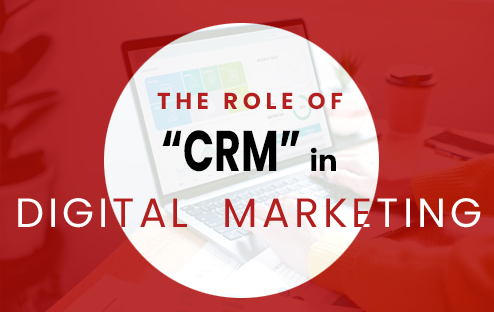
Customer relationship management (CRM) has become an essential tool for businesses of all sizes. CRM helps businesses to manage customer data, track sales, and build relationships with customers. But what role does CRM play in digital marketing? Let’s gain a deep insight.
Understanding CRM in the Digital Era:
Customer Relationship Management, traditionally associated with managing and analyzing customer interactions, has undergone a transformative journey in the digital age. Today, CRM is not merely a tool; it’s a comprehensive strategy that integrates seamlessly with digital marketing efforts, facilitating personalized engagement, data-driven decision-making, and customer-centric approaches.
Personalized Customer Experiences:
In the era of information overload, customers crave personalized interactions. CRM empowers digital marketers to create tailored experiences by leveraging customer data. By analyzing customer preferences, behaviors, and demographics, businesses can deliver targeted content, personalized recommendations, and timely communications. This not only enhances customer satisfaction but also boosts brand loyalty.
Data-Driven Decision Making:
The abundance of data in the digital realm can be overwhelming, but CRM acts as a guiding light. It centralizes customer data, providing marketers with valuable insights into customer behavior, preferences, and engagement patterns. Armed with this information, marketers can make informed decisions, optimize campaigns, and allocate resources effectively. The result is a more streamlined and efficient digital marketing strategy.
Integrated Marketing Campaigns:
CRM seamlessly integrates with various digital marketing channels, allowing for cohesive and integrated campaigns. Whether it’s email marketing, social media, or content marketing, CRM ensures that every touchpoint aligns with the overall marketing strategy. This integration fosters consistency, enhances brand messaging, and maximizes the impact of marketing efforts across diverse channels.
Lead Nurturing and Conversion:
In the digital landscape, converting leads into customers is a delicate art. CRM systems enable marketers to track leads through the entire sales funnel, from initial contact to conversion. By automating lead nurturing processes, businesses can deliver targeted content at each stage, ensuring that potential customers receive the right information at the right time. This not only accelerates the conversion process but also improves the overall quality of leads.
Customer Retention and Loyalty:
Acquiring new customers is essential, but retaining existing ones is equally crucial. CRM tools assist in building lasting relationships by monitoring customer interactions, identifying potential issues, and proactively addressing concerns. By providing excellent post-purchase support and personalized incentives, businesses can foster customer loyalty and transform satisfied customers into brand advocates.
Measuring ROI and Performance:
Digital marketing success is not just about implementing strategies but also about measuring their impact. CRM systems come equipped with analytics tools that enable marketers to track key performance indicators (KPIs), measure return on investment (ROI), and assess the effectiveness of campaigns. This data-driven approach allows businesses to refine their strategies, allocate resources wisely, and maximize the efficiency of their digital marketing efforts.
Conclusion:
Overall, CRM plays an essential role in digital marketing. By gathering and analyzing customer data, businesses can create more effective campaigns, build relationships with their customers, and measure the success of their digital marketing strategies. With the help of CRM, businesses can maximize their digital marketing efforts and maximize their return on investment.
ALSO READ:- AI-Powered Digital Marketing: Unleashing the Future of Advertising
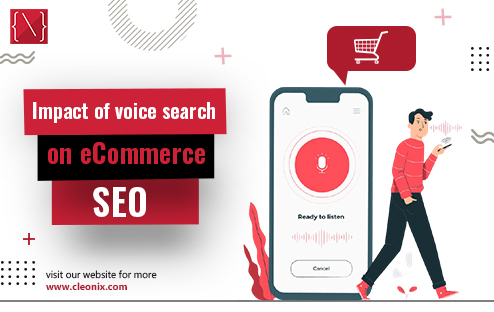
In the ever-evolving landscape of digital marketing, staying ahead of the curve is essential for businesses looking to maintain and enhance their online presence. One of the latest trends reshaping the way consumers interact with the internet is the rise of voice search. As voice-enabled devices like smart speakers and virtual assistants become increasingly popular, their impact on various aspects of online business, particularly eCommerce SEO, cannot be ignored.
The Evolution of Search
Traditional methods of searching, such as typing queries into a search engine, are being complemented and, in some cases, replaced by voice search. The convenience and efficiency of asking a question aloud instead of typing have led to a surge in the adoption of voice-activated devices. Virtual assistants like Amazon’s Alexa, Apple’s Siri, Google Assistant, and Microsoft’s Cortana have become integral parts of people’s daily lives, transforming the way they gather information and make purchasing decisions.
Changing Search Queries
Voice searches tend to differ significantly from text-based searches. When typing a query, users often use concise phrases or keywords, while voice searches tend to be more conversational and natural. For instance, someone might type “best smartphones 2023,” but in a voice search, they might ask, “What are the top-rated smartphones of 2023?” This shift in search behavior has profound implications for eCommerce businesses aiming to optimize their content for search engines.
Long-Tail Keywords Gain Prominence
With the shift towards more conversational queries, the importance of long-tail keywords has increased. These are specific, detailed phrases that users are more likely to use in voice searches. Businesses must adapt their SEO strategies to incorporate these longer, more natural phrases to ensure their products and services are discoverable in voice search results.
Local SEO and Mobile Optimization
Voice searches are often location-specific, with users asking questions like “Where is the nearest electronics store?” This emphasizes the need for robust local SEO strategies for eCommerce businesses. Ensuring that your business’s information is accurate and up-to-date on platforms like Google My Business is crucial for capturing local voice search traffic.
Additionally, mobile optimization plays a significant role, as many voice searches occur on mobile devices. A seamless and mobile-friendly website becomes even more critical to providing a positive user experience and ranking well in voice search results.
The Rise of Featured Snippets
Voice search results are often drawn from featured snippets – concise, information-packed answers that appear at the top of search engine results. Structuring content to provide clear, concise answers to common questions related to your products or services increases the likelihood of your content being featured in voice search results, thereby boosting your visibility and credibility.
Conversational Content is Key
To align with the more conversational nature of voice searches, eCommerce websites need to create content that feels natural when spoken aloud. This involves not only integrating long-tail keywords but also adopting a tone that mimics how people ask questions in real-life conversations. User-friendly, conversational content enhances the overall user experience and increases the chances of being favored by voice search algorithms.
Optimizing Product Information for Voice Search
As voice searches become more prevalent in eCommerce, it’s crucial to optimize product information for this shift in user behavior. This includes creating detailed product descriptions using natural language, incorporating relevant long-tail keywords, and ensuring that your product information is easily digestible for voice-activated devices.
The Future of eCommerce SEO
The impact of voice search on eCommerce SEO is undeniable, and businesses that embrace and adapt to this change will undoubtedly have a competitive advantage. Staying informed about emerging trends, understanding evolving consumer behavior, and continuously optimizing online content for voice search are key strategies for eCommerce success in this dynamic digital landscape.
In conclusion, as voice search continues to reshape the digital landscape, eCommerce businesses must evolve their SEO strategies to remain visible and competitive. By understanding the changing nature of search queries, focusing on local SEO, optimizing for mobile devices, and creating conversational content, businesses can position themselves to thrive in the era of voice-activated search. Embracing these changes today will not only enhance current SEO efforts but also future-proof online businesses in the evolving world of eCommerce.
ALSO READ: Role of UX Design in eCommerce Website Development
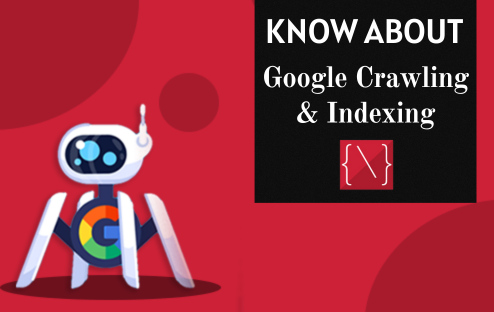
In the vast and ever-expanding world of the internet, search engines serve as our trusty guides, helping us navigate the web’s seemingly endless sea of information. Google, being the most prominent of these digital guides, deploys a complex system to ensure that it efficiently and accurately presents us with the most relevant search results. This system involves two essential processes: crawling and indexing. In this blog, we will delve deep into the world of Google’s crawling and indexing, unveiling the mysteries behind how the search engine makes sense of the internet.
Crawling: The First Step
Crawling is the first step in Google’s process of organizing the web. Imagine the internet as a vast library, and Google’s crawlers as diligent librarians, scouring the shelves for books. In this case, web pages are the books, and crawlers are automated bots or spiders, programmed to methodically traverse the internet.
How Crawling Works
The process begins when Google’s crawlers visit a web page, typically by following links from other pages or through a sitemap submitted by website owners. The bot then downloads the page’s HTML content, analyzes it, and follows any links found within the content. This process continues, forming a vast network of interconnected pages. It’s worth noting that Googlebot doesn’t view websites like humans do; instead, it relies on the HTML source code and text content.
Crawling Frequency
Not all websites are crawled with the same frequency. Google assigns a crawl budget to each site, considering factors such as the site’s importance, update frequency, and server response time. High-quality, frequently updated websites usually get crawled more often, while low-quality or rarely updated sites may be crawled less frequently.
Robots.txt and Meta Robots
Website owners have the ability to control what parts of their site are crawled through a file called ‘robots.txt’ and by using ‘meta robots’ tags in their HTML. These tools allow site owners to exclude specific pages or directories from being crawled by Google.
Indexing: The Second Step
Once a page is crawled and its content is analyzed, Google adds it to its vast database, also known as the index. The index is like a giant catalog of the internet’s content, allowing Google to quickly retrieve and display relevant search results to users.
How Indexing Works
Google’s indexing process involves parsing and storing the information from a web page. This information includes text content, images, videos, and even structured data like schema markup. This stored data is then analyzed and sorted, making it easier to retrieve when a user conducts a search query.
Duplicate Content
One critical aspect of indexing is managing duplicate content. Duplicate content can confuse search engines and negatively impact a site’s search rankings. Google’s indexing system aims to identify and consolidate duplicate pages, ensuring that only one version is stored in the index.
Updating the Index
The index is not static; it’s constantly updated to reflect changes on the web. When Google’s crawlers revisit a page and detect changes, the index is updated accordingly. This process ensures that search results are current and relevant to users.
The Connection between Crawling and Indexing
The relationship between crawling and indexing is intimate. Crawling provides the raw data, and indexing organizes and makes sense of this data. When a user enters a search query, Google’s search algorithms consult the index to provide the most relevant results.
The efficiency and accuracy of this process depend on how well Googlebot crawls and how comprehensively Google’s index reflects the content of the web. For website owners and digital marketers, understanding this relationship is crucial, as it helps optimize a site’s visibility in search results.
Best Practices for Website Owners
Now that we have a better grasp of Google’s crawling and indexing processes, let’s explore some best practices for website owners:
Optimize Crawlability: Ensure that your website is easily crawlable by organizing your site structure, using clear and concise HTML, and creating a sitemap.
Quality Content: Publish high-quality, relevant content that engages users. Google’s algorithms favor fresh, unique, and valuable content.
Mobile-Friendly: With the mobile-first indexing approach, it’s essential to have a mobile-friendly website for a broader reach.
Page Speed: Fast-loading pages are essential for a good user experience and can positively impact your search rankings.
HTTPS: Secure your website with HTTPS, as Google prefers secure sites and ranks them higher.
Structured Data: Implement structured data markup (schema.org) to enhance the visibility of rich snippets in search results.
Regular Updates: Keep your site fresh and updated, as this encourages Google to crawl and index your site more frequently.
Duplicate Content: Avoid duplicate content issues by using canonical tags or redirects to specify the preferred version of a page.
Robot Directives: Use robots.txt and meta robots tags to control which parts of your site are crawled.
Monitor Performance: Regularly check your site’s performance in Google Search Console to identify crawl and indexing issues.
Conclusion
Google’s crawling and indexing processes are the backbone of the search engine’s ability to provide users with relevant and up-to-date information from the vast expanse of the internet. Understanding these processes and implementing best practices can significantly impact a website’s visibility and search rankings.
Website owners and digital marketers should continuously adapt to the evolving landscape of SEO and search engine algorithms, ensuring their sites are not only crawled but also indexed effectively. By doing so, they can harness the immense power of Google to connect with a global audience and provide valuable information to those in search of answers, products, or services.
ALSO READ: How Schema Markup Contributes to Your SEO Ranking?
About the author
Cleonix Technologies
A professional Web Development Company is highly focused on providing world class and best in the industry standard services in every domain that we work upon.

 AJ 14, Salt Lake, Sector 2, Kolkata - 700091 |
AJ 14, Salt Lake, Sector 2, Kolkata - 700091 |  743 Virginia Ave NE Atlanta, GA 30306
743 Virginia Ave NE Atlanta, GA 30306










